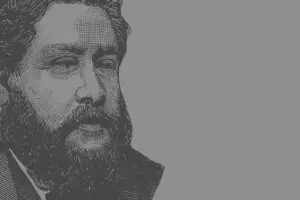The 1963 Revision of the Doctrine of Man
On May 9, 1963, the Southern Baptist Convention adopted the 1963 revision of the Baptist Faith and Message. Among the changes in the revision, section three was renamed from “The Fall of Man” to simply “Man” and a subtle but significant change was made to the sentence concerning the state of man’s depravity and the imputation of Adam’s guilt to his posterity.
The 1925 Baptist Faith and Message reads:
whereby his posterity inherit a nature corrupt and in bondage to sin, are under condemnation, and as soon as they are capable of moral action, become actual transgressors.
The 1963 Baptist Faith and Message revised this sentence as follows:
whereby his posterity inherit a nature and an environment inclined toward sin, and as soon as they are capable of moral action become transgressors and are under condemnation.
THEOLOGICAL SIGNIFICANCE
The 1963 revision to the Baptist Faith and Message moves from a clear statement of imputed guilt to an ambiguous statement that can be interpreted multiple ways. Further, the language concerning man’s inherited corruption is softened and a statement concerning the effect of Adam’s sin on the environment in added.
In the original 1925 Baptist Faith and Message, the descendants of Adam inherit “a nature corrupt and in bondage to sin.” Whereas in the revised 1963 version, man inherits from Adam “a nature and an environment inclined toward sin.”
The 1963 revision includes a statement on the corrupted environment being passed down, which was not included in the original. Although Southern Baptists then and now would agree that the environment has been corrupted because of Adam’s sin, this is a statement on man, not on his environment. Further, the 1963 revision has clearly attempted to lessen the degree in which mankind is affected by the sin of Adam. Including a statement on the environment allows one to assume that the sinful nature of man is at least in part caused by living in a sinful environment. In the 1963 revision, man simply has “a nature… inclined toward sin.” The original 1925 statement clearly uses much stronger language, ascribing to man a corrupt nature that is not only inclined to sin, but has sin for a master. The original language shows man is “in bondage to sin.”
The 1963 revision becomes ambiguous concerning imputed guilt. The 1925 version is clear that mankind is “under condemnation” as a result of Adam’s sin. However, the 1963 revision can be interpreted as mankind being under condemnation as the result of Adam’s sin or as a result of each man’s own personal transgressions.
An interpretation faithful to the clear meaning of the 1925 Baptist Faith and Message would be:
whereby his posterity inherit: (1) a nature and an environment inclined toward sin, (2) and as soon as they are capable of moral action become transgressors (3) and are under condemnation. (Italics added)
In this first reading, man is under condemnation as one of three things inherited from Adam due to his sin.
However, a more plain reading of the revision is not faithful to the clear meaning of the 1925 Baptist Faith and Message:
whereby his posterity inherit: (1) a nature and an environment inclined toward sin, (2) and as soon as they are capable of moral action become transgressors and are under condemnation. (Italics added)
In this second reading, man inherits two things from Adam. Being under condemnation is not inherited from Adam, but a result of man becoming a transgressor himself after being capable of moral action.
Herschel Hobbs, then president of the Southern Baptist Convention and Chairman of the committee that revised the Baptist Faith and Message in 1963, appears to have made this revision late in the process. His papers, now at the Southern Baptist Historical Library, include a typed draft copy of the proposed 1963 Baptist Faith and Message. This draft copy shows the 1925 language on imputed guilt is in type and the 1963 language added in hand writing indicating a late revision in the process.
A. J. Smith, who wrote a doctoral dissertation on the 1963 Baptist Faith and Message at Southern Baptist Theological Seminary, summarizes the edits on man: “In the end, Article III moved from being a tightly worded expression of the Calvinistic view of man’s sinfulness to an article open to widely divergent theological interpretation. One can read it through either a Calvinist or New Haven lens on depravity and find it acceptable.”1
“New Haven theology postulated voluntary sin as a moral disposition or tendency.”2 This theology was employed by Charles Finney, an evangelist known to have based his gospel invitations on an assumption of the free will of man. He and his contemporaries introduced into their evangelistic efforts “new measures” —measures that focused on the natural ability of man to turn toward Christ. New Haven theology “viewed individuals as free moral agents. Finney believed strict Calvinism denied the very possibility of salvation by removing human ability to respond to grace.”3
WHY A REVISION?
Southern Baptists were in the midst of controversy in 1963, primarily over teaching in their seminaries that presumed a different view of the Bible than the majority of Southern Baptists in the pews. An overwhelming majority of Southern Baptists affirmed that all Scripture is God breathed and inspired so that every word is entirely trustworthy. Meanwhile, many of their seminary professors were teaching differently. It was proposed that the Baptist Faith and Message should be examined and updated in light of the majority position of Southern Baptists of the day that would then direct them on how to deal with the controversy.
Throughout history, Christians have written what they believe to be an accurate summary of biblical truth in the form of a statement of faith. Many scholars speculate that we even have a biblical example for the use of confessions in Hebrews 13:8. William Lane says “the confession could be an originally independent acclamation.”4 It is possible that “Jesus Christ is the same yesterday and today and forever” (Hebrews 13:8) was a very early confession of faith.
Statements of faith have never been comprehensive for all matters of faith, rather, Christians have left this role for the Scriptures alone. Instead, history has shown a pattern of theological controversy answered in the form of a statement of faith. When Arius challenged the traditional understanding of Christ’s two natures, human and divine, the church responded with the Nicene Creed. Seventy years later, another error concerning the natures of Christ was being taught and another statement of faith was established by the church, this time it was The Definition of Chalcedon.
In 1925, America was in the midst of a general attitude against the supernatural. This was the era of the famous Scopes “monkey trials” in which creation and evolution proponents fought over school curricula. The preamble to the 1925 Baptist Faith and Message includes the following statement describing the need for a confession of faith for Southern Baptist use:
The present occasion for a reaffirmation of Christian fundamentals is the prevalence of naturalism in the modern teaching and preaching of religion. Christianity is supernatural in its origin and history. We repudiate every theory of religion which denies the supernatural elements in our faith.5
When the 1925 Baptist Faith and Message was drafted, the committee began with a statement of faith already widely used in Southern Baptist Churches as they explain in their preamble:
In pursuance of the instructions of the Convention, and in consideration of the general denominational situation, your committee have decided to recommend the New Hampshire Confession of Faith, revised at certain points, and with some additional articles growing out of present needs, for approval by the Convention, in the event a statement of the Baptist faith and message is deemed necessary at this time.
This tradition of revising a previous statement of faith goes back further than the New Hampshire Confession of Faith (1833). The New Hampshire Confession of Faith was adopted from the 1689 London Baptist Confession of Faith, although in a form far more brief and vague on many points than the 1689 before it. When the framers of the 1689 (Second) London Baptist Confession of Faith sought to revise the 1644 (First) London Confession, they borrowed and adapted wording from the Presbyterian 1646 Westminster Confession of Faith.
The 1963 committee follows a long tradition of revising an existing confession of faith rather than starting from scratch. Further, the 1925 Baptist Faith and Message committee invited later revision:
That we do not regard [the confessions in the 1925 Baptist Faith and Message] as complete statements of our faith, having any quality of finality or infallibility. As in the past so in the future Baptist should hold themselves free to revise their statements of faith as may seem to them wise and expedient at any time.
Southern Baptists in 1963 found it wise and expedient to adopt a revision of their statement of faith because of a controversy that began two years prior.
In 1961, Ralph Elliott published The Message of Genesis. In The Message of Genesis, Elliott proposes that the first eleven chapters of Genesis are not actual historical accounts, but rather represent deeper theological facts.6 Elliott said he “just cannot buy” that God created the world in seven literal twenty-four hour days.7 Elliott also took the position that Adam is not a historical man. Elliott taught that Adam is a metaphor for all mankind.8 Elliott was a professor at Midwestern Baptist Theological Seminary in Kansas City, MO. These views were being taught to Southern Baptist seminary students at a school funded with Southern Baptist cooperative program dollars and The Message of Genesis was being printed by The SBC’s publishing arm, Broadman Press.
An early response to Elliott’s work came from K. Owen White. In his response, White referred to himself as “a graduate of Southern Seminary and having served as pastor of Southern Baptist Churches for more than 30 years.”9 White’s response was titled “There is Death on the Pot!” and it was printed in most state Baptist newspapers.10 White cited many examples of heterodoxy from The Message of Genesis, including statements refuting the common understanding of biblical inerrancy.
White minced no words, stating: “The book from which I quoted is liberalism, pure and simple! It stems from the rationalistic theology of Wellhausen and his school, which led Germany to become a materialistic godless nation.” Elliott and his defenders clung to a principal of “academic freedom.” White responds to this claim as well:
If the appeal is made for “academic freedom,” let it be said that we gladly grant any man the right to believe what he wants to—but, we do not grant him the right to believe and express views in conflict with our historic position concerning the Bible as the Word of God while he is teaching in one of our schools, built and supported by Baptist funds.11
Prior to the 1962 Southern Baptist Convention, Southern Baptist leaders anticipated a possible “explosion” that they hoped to avoid by devising a plan before the convention. Hobbs invited Porter Routh and Albert McClellan to a meet with him to address this issue.12 Routh was serving as Treasurer of the Southern Baptist Convention and Executive Secretary-Treasurer of the Southern Baptist Convention Executive Committee.13 McClellan was serving as program planning secretary for the Executive Committee.14
In that meeting, Routh said, “Some people feel that Southern Baptists are becoming more liberal in theology. If so, we should know it. It seems that the best way to determine that would be to have a committee study the 1925 statement of ‘The Baptist Faith and Message.’” With Hobbs and McClellan in agreement, they had the beginnings of their plan.15
Initially Hobbs planned to form a committee consisting of himself as chairman, every state SBC president as a member, and the presidents of the six seminaries as members. Prior to announcing the plan at the 1962 convention, Hobbs met with the editors of the state Baptist newspapers who insisted that the seminary presidents not be involved. They argued that the seminary presidents were under investigation and should therefore not be part of the investigation. Hobbs agreed to move forward with a committee of himself and the state SBC presidents without the seminary presidents, but noted that the purpose was not to investigate the seminaries, but to determine if the current statement of faith is an accurate representation of the convention of its day.16
At the 1962 convention, Southern Baptists considered a motion to affirm their faith in the Bible and to instruct the Sunday School Board to discontinue printing Elliott’s The Message of Genesis. White made this motion, which passed, but was quickly ruled out of order because the matter was not on that session’s agenda. The motion was broken into two by Hobbs and placed on the agenda for the following morning. The motion to “reaffirm their faith in the entire Bible as the authoritative, authentic, infallible Word of God” passed. However, the motion to instruct the Sunday School Board to discontinue printing The Message of Genesis failed. Rather than instruct the Sunday School Board, they were asked to consider the matter on their own. In their next board meeting, they decided to discontinue printing The Message of Genesis.17
WHY THIS REVISION?
The purpose of the 1963 revision of the Baptist Faith and Message was to determine if the theological positions of Southern Baptists remained conservative as stated in the 1925 version of the Baptist Faith and Message or, if the convention was in fact becoming liberal. Although the statement being examined had nothing to do with liberalism, the committee also took the opportunity to completely review the statement and update it for clarity. However, they claimed their revisions were not changing any doctrinal beliefs.
Hobbs determined that the men gathered to serve on the 1963 revision committee were conservatives. Hobbs writes to Reverend W. Marion Lewter, moderator of Indian Creek Baptist Association of Tennessee, “Let me assure you that should changes be made in the 1925 statement they will not be toward liberalism … I do know the tone of the thinking of the brethren. This is a conservative group of men.”18
Although Hobbs has determined that there has been no shift in the faith, there is no evidence to suggest that simply reaffirming the 1925 Baptist Faith and Message was even considered at this point. Hobbs told one church member concerned about revising the Baptist Faith and Message that “this does not mean in any sense that we are changing our faith.”19
When the committee solicited feedback on the first draft of their revised Baptist Faith and Message, Mercer University’s department of Christianity stated that they were unable to completely review the entire document, but wanted to point out some “especially serious problems.” Among these was “a statement which is Pelegian” according to the letter from Mercer University.
The section of the first draft of 1963 revision in question reads: “VI. Salvation – Salvation involves the redemption of man in his complete being, and is made free to all by the gospel. Nothing prevents the salvation of a sinner except his failure to accept Jesus Christ as Savior and Lord.”20
In the statement on man, the draft contained a sentence which read “Only the grace of God can bring man into His holy fellowship and enable man to fulfill the purpose of his creation.” — the final version retains this sentence with only minor editing for readability: “Only the grace of God can bring man into His holy fellowship and enable man to fulfill the creative purpose of God.”
Mercer refers to the sentence from the statement on man as “an accurate statement of justification by grace alone,” however, they say it is “contradicted two sentences later by a statement which is Pelegian by the use of the phrase ‘nothing … except man’s failure ….’”21
The committee did not include this statement in their final revision. However, the inclusion in the first draft shows the committee’s propensity to move away from a more reformed understanding of soteriology. Just as saying man’s failure to accept Christ prevents God’s saving of men is a Pelegian statement, the denial of the doctrine of imputed guilt is also in agreement with Pelegian and Arminian theologies.
Perhaps the more telling evidence explaining the change to the statement on man is the complete lack of any record at all. Mercer University may have made the only objection concerning a move toward Pelegian theology, and they didn’t even mention the statement on man, but found a statement on grace in an early draft that was objectionable.
A brief understanding of the committee’s theology will shed light on their thought process when revising the confession. The two committee members who exerted the most influence over the committee were Hobbs and Dick H. Hall.
Hershel H. Hobbs
Hobbs was clearly the most influential in writing the 1963 Baptist Faith and Message. In Hobbs’ exposition of the 1963 Baptist Faith and Message, he relegates the effect of Adam’s sin on his posterity to a single sentence, “The story of Adam and Eve is the history of the human race, because all their posterity inherit the same tendency toward sin.”22
How one understands original sin has a great impact on one’s view of the sovereignty of God in salvation. A reformed soteriology starts with man’s total depravity or their “bondage to sin” as expressed in the 1925 Baptist Faith and Message. From this flows Man’s inability to do good apart from God’s grace, which includes choosing to follow Him. Pelegian theology denies that man inherited any sin nature or guilt from Adam. Arminian theology believes that all men are tainted by original sin but have the power to choose to follow God. Therefore, because the understanding of original sin impacts soteriology, we can examine Hobbs’ soteriology and work backward to his unstated assumptions on original sin.
When discussing election, Hobbs says, “The tenor of the Bible is that God loves all men and wishes to save as many as possible.”23 Since with God “all things are possible” (Matthew 19:26), this statement could lead to universalism. Hobbs, however, was certainly not a universalist. His understanding of how salvation comes to us explains how he attempts to reconcile God’s desire to “save as many as possible” with the fact that not everyone will be saved.
Hobbs explains the use of the term “predestined” in Ephesians 1 to mean that God chose before the foundation of the world the condition of salvation, not whom He would save. That condition according to Hobbs is being “in Christ.” For Hobbs, being “in Christ” is a decision any man is free to make of his own free will.24 Therefore, Hobbs rejects the doctrine of total depravity and the 1963 revision to the statement on man in the Baptist Faith and Message clearly aligns within Hobbs’ theology.
Later, Hobbs makes his intentions in the revision absolutely clear in his 1979 article “Southern Baptists and confessionalism: a comparison of the origins and contents of the 1925 and 1963 confessions:”
Thus the result of the fall is that men inherit, not “a nature corrupt and in bondage to sin” (1925), but a “nature and an environment inclined toward sin” (1963). In the latter “condemnation” comes upon individuals following transgression “as soon as they are capable of moral action.” This, of course, agrees with the position generally held by Baptists concerning God’s grace in cases of those under the age of accountability and the mentally incompetent.25
Here Hobbs makes plain his denial of imputed guilt and his clear intention to soften the effects of Adam’s sin on his posterity in the 1963 revision of the Baptist Faith and Message. The purpose of this revision was none other than to deny imputed guilt. In doing so, the question can be raised as to whether or not people may enter heaven apart from God’s grace. Hobbs clearly states that he believes no man is guilty in Adam, but rather men are guilty once they actually transgress. The implication is given that those not capable of moral action, such as children and people with intellectual disabilities, are deserving of heaven apart from the grace of God. Another implication is that eternal life is owed to this class of people and they can come to the Father apart from Christ.
Hobbs’ denial of imputed guilt seems to go beyond the actual statement added to the 1963 Baptist Faith and Message which reads “only by God’s grace can man be brought into holy fellowship with God and fulfill the creative purpose of God.” Hobbs does not make clear how the innocent would require grace.
Dick H. Hall
Dick H. Hall was also an influential member of the committee who also wrote an exposition of the 1963 Baptist Faith and Message after serving on the committee. Understanding his theology will add to understanding the revisions in the confession. Hall says that in the fall: “man became contrary. He listened to the slanderer of his creator and willfully disobeyed his orders. And the first child born on earth became the murderer of the second. Thus man’s progeny had and has the bent toward sin.”26 Hall does not discuss imputed guilt, but does give an explanation in line with the 1963 Baptist Faith and Message’s statement on man’s nature inherited from Adam.27
For Hall, the human will is not totally depraved. Hall explains election as the Holy Spirit putting “the thought” on man’s heart.28 Hall implies that all men have been elected, attributing election to even Jesus’ betrayer, Judas, “Surely Judas was called elected.” Hall said of Judas: “Jesus gave him every chance to put faith in Himself. He cast out many devils, but Judas chose to keep his, and finally betrayed Him.” Of this example of Judas, Hall extrapolates “Nothing could better illustrate Divine respect for our right of choice than Jesus’s dealings with Judas.”29
Hall explicitly rejects the sovereignty of God in salvation by saying: “But to think of His foreordaining that some are to perish, while others are to be saved, is inconsistent without our concept of God as a gracious Father who is love personified.”30
Hall summarizes his position by saying: “We must conclude that God has made in Christ’s atonement adequate provision for salvation of all men. But the acceptance of that salvation—the fearful responsibility of it—rests with each individual. Jesus knocks at the door. He never breaks in.”31
Although Hall does not clearly explain his position on imputed guilt or the extent of man’s bondage to sin as a result of the fall, we can see his position in his soteriology. Hall states that all men have the ability to choose to follow Christ. Thus, he must either deny the 1925 statement on man or believe in a prevenient grace that reduces depravity in all men to a point where they can freely choose God.
The 1963 revisions to the Baptist Faith and Message on the Fall are in line with Hall’s soteriology. Based on the theological climate of the day, it is likely that all seven of the subcommittee members who drafted the 1963 Baptist Faith and Message would agree with Hall and Hobbs when they deny the doctrine of total depravity in the form it was confessed in the Baptist tradition that traces from 1644 (First London Confession of Faith) to 1963.
The shift in Southern Baptist understanding of the fall of man and its effect on mankind did not happen overnight. Rather, the shift came slowly without much notice. Smith quotes Mark Coppenger, who sees the long trend this way:
Could it be that the perception of lost mankind’s character and capability are improving in our preaching, much as they have in our doctrinal statements? Could it be that the unregenerate are being progressively perceived as less depraved? The evidence indicates that there has been an ascent of lost man in the thinking of Southern Baptists over the course of their history.32
This shift had slowly worked into the convention and the Southern Baptist understanding of the fall of man and its effect on mankind had eroded so far by 1963 that nobody noticed the change.
CONCLUSION
If this change were proposed in 1925, it would have been defeated because the denomination had a clearer understanding of and belief in a reformed soteriology. If this change were proposed today, it would be very divisive because there is a large number of Southern Baptists with a reformed soteriology. However, by 1963 the denomination had made a swing so far away from reformed soteriology that the change simply was faithful in representing the vast majority of Southern Baptist Baptists’ beliefs—such a majority in fact that not a single letter to the editor or editorial can be found in any state Baptist newspaper objecting to the change or even mentioning it following either the proposed statement published by nearly every state Baptist paper or following its adoption at the 1963 Southern Baptist Convention.
It is tempting to attribute the revision to intentional ambiguity for the sake of inclusivity. Ted B. Moorhead, Jr., Pastor of Central Baptist Church in Melboure, Florida, thanks Hobbs for his “reassurance that the committee will seek to make the statement not too tight for our brethren to conscientiously live within and at the same time not compromise on the truth.”33 However, considering the theological temperament at the time and Hobbs’ own words, this is unlikely. Rather the committee attempted to make the statement clearer and in agreement with the vast majority of Southern Baptists.
Hobbs made many statements that the committee was not altering the faith confessed in the 1925 Baptist Faith and Message. Hobbs stated “In no sense did it delete from or add to the basic meaning of the 1925 statement.”34 Therefore, giving Hobbs’ the benefit of the doubt, he must have sincerely believed that the intent of the 1925 Baptist Faith and Message was to deny imputed guilt.
By the content of the State Baptist Newspapers leading up to and immediately following the 1963 convention, it appears that Southern Baptists of the day had three issues in mind: communism, race and liberalism. The chief of these was liberalism; so much so that it appears they would have accepted nearly any change to the Baptist Faith and Message, so long as the only place they were looking was well written: the statement on the authority of the Bible.
1 A. J. Smith, The Making of the 1963 Baptist Faith and Message (PhD diss., Louisville, KY: The Southern Baptist Theological Seminary, 2004), 202–203
2 George Thomas Kurian, Nelson’s New Christian Dictionary: The Authoritative Resource on the Christian World (Nashville, TN: Thomas Nelson Publishers, 2001).
3 Erwin Fahlbusch and Geoffrey William Bromiley, The Encyclopedia of Christianity (Grand Rapids, MI: Wm. B. Eerdmans; Brill, 1999–2003), 2:319.
4 William L. Lane, Hebrews 9–13, Word Biblical Commentary, vol. 47B (Dallas: Word, Incorporated, 1998), 529.
5 Preamble to the 1925 Baptist Faith and Message.
6 Carl L. Kell, Against the Wind: The Moderate Voice in Baptist Life (Knoxville, TN: University of Tennessee Press, 2009), 28.
7 Ibid.
8 Ibid.
9 Ibid., 33.
10 Herschel H. Hobbs, My Faith and Message: An Autobiography (Nashville, TN: Broadman & Holman), 1993, 235.
11 Kell, Against the Wind: The Moderate Voice in Baptist Life, 34.
12 Hobbs, My Faith and Message, 236.
13 Resolution on Appreciation for Porter Wroe Routh” (June 1979), http://www.sbc.net/ resolutions/amResolution.asp?ID=396 (accessed June 18, 2013).
14 Inventory of the Albert McClellan Collection AR 610 Prepared by Michelle Herr Southern Baptist Historical Library and Archives” (October, 2011) http://www.sbhla.org/downloads/610.pdf (accessed June 18, 2013).
15 Hobbs, My Faith and Message, 236.
16 Ibid., 236–237.
17 Ibid.
18 Hershel H. Hobbs, letter to Reverend W. Marion Lewter (Moderator of Indian Creek Baptist Association, TN, SBC), October 5, 1962 as found in the “Baptist Statement of Faith and Message, 1962-63 Committee Files” (Nashville, TN: Historical Commission, Southern Baptist Convention, 1963).
19 Hershel H. Hobbs, letter to Mrs. Marjorie Dean Dockery of Colorado Springs, CO (Member of First Southern Baptist Church in Colorado Springs, CO.), September 13, 1962 as found in the “Baptist Statement of Faith and Message, 1962-63 Committee files” (Nashville, TN: Historical Commission, Southern Baptist Convention, 1963): “Through the centuries Baptist from time to time have drawn up statements of what they believe.” … “This does not mean in any sense that we are changing our faith. Indeed the New Testament is our one rule of faith and order as it has always been. The Statement of Faith will simply be to set down in orderly fashion some of the basic things which we believe, and which are taught in the New Testament.”
20 Draft revision of The Baptist Faith and Message as found in the “Baptist Statement of Faith and Message, 1962-63 Committee files” (Nashville, TN: Historical Commission, Southern Baptist Convention, 1963).
21 Letter from Mercer University to Baptist Faith and Message committee as found in the “Baptist Statement of Faith and Message, 1962-63 Committee files” (Nashville, TN: Historical Commission, Southern Baptist Convention, 1963).
22 Herschel H. Hobbs, The Baptist Faith and Message, (Nashville, TN: Convention Press, 1971), 54.
23 Ibid., 65.
24 Ibid., 67.
25 Herschel H. Hobbs, “Southern Baptists and Confessionalism: A Comparison of the Origins and Contents of the 1925 and 1963 Confessions,” 76 Review and Expositor (1979), 63.
26 Dick H. Hall, “Bedrock Beliefs of Baptists,” The Christian Index (1979), 15.
27 Ibid., 14–16.
28 Ibid., 19.
29 Ibid.
30 Ibid.
31 Ibid., 20.
32 A. J. Smith, The Making of the 1963 Baptist Faith and Message, 201, quoting Mark Coppenger, “The Ascent of Lost Man in Southern Baptist Preaching,” 25 The Founders Journal (Summer 1996), 5.
33 Undated letter in the 1963 committee papers from Moorehead to Hobbs as found in the “Baptist Statement of Faith and Message, 1962-63 Committee files” (Nashville, TN: Historical Commission, Southern Baptist Convention, 1963).
34 Herschel H Hobbs, The Baptist Faith and Message, “The People Called Baptist and the Baptist Faith and Message: The Herschel H. & Frances J. Hobbs Lectureship in Baptist Faith and Heritage at Oklahoma Baptist University” (Shawnee, OK: Oklahoma Baptist University Press, 1981), 30






















